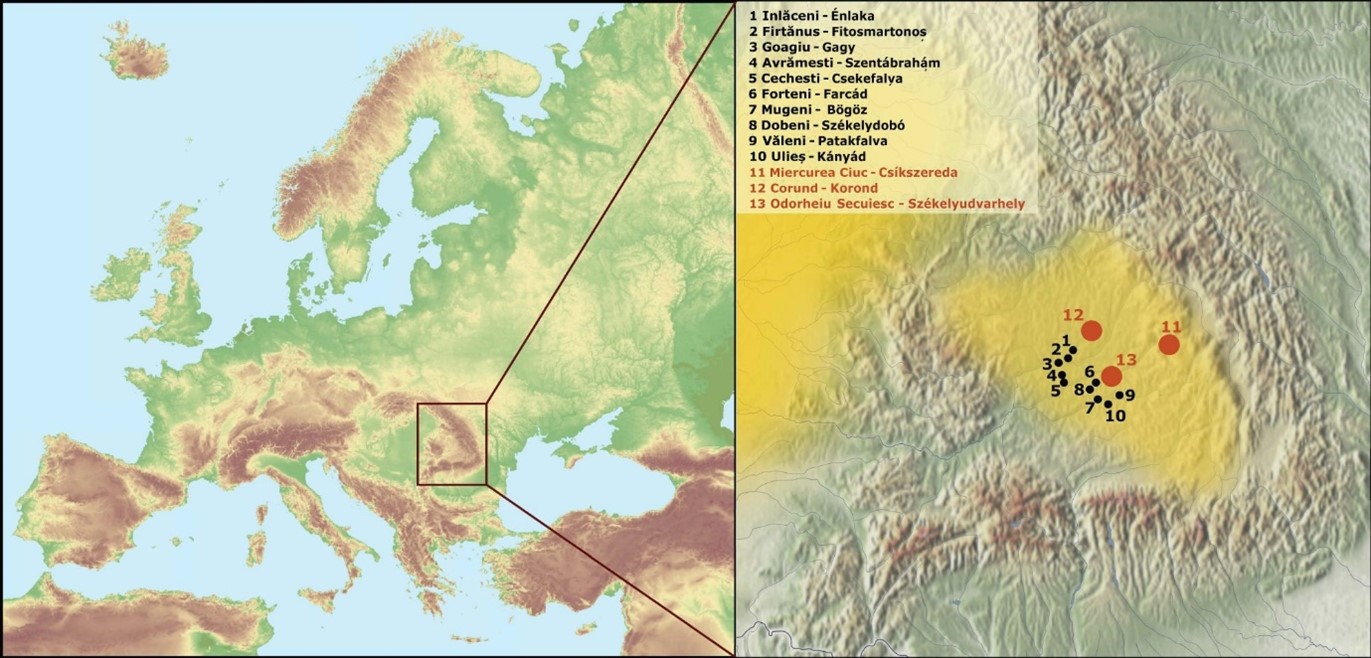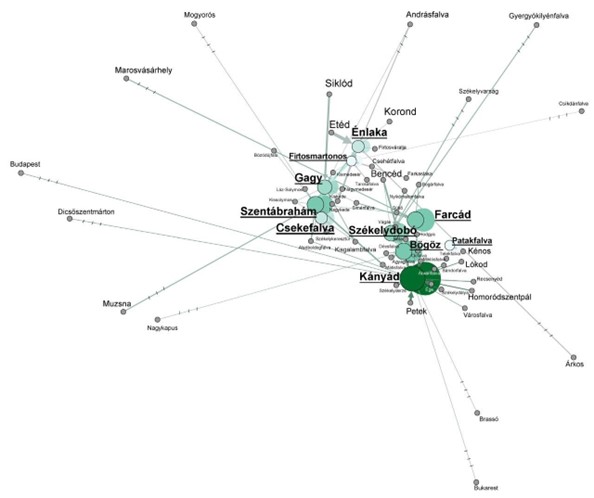Ancestral paternal and maternal lineages have been investigated in the Székelyudvarhely (Odorheiu Secuiesc) region of Transylvania, led by the researchers of the Institute of Archaeogenomics of the ELKH Research Centre for the Humanities (BTK AGI). The researchers evaluated the results using population genetics and phylogenetic methods in the context of modern and ancient populations geographically or historically related to the Székely people, a Hungarian indigenous ethnic group in Romania. In a paper published in the journal Genes in January 2023, they described the first complete mitochondrial genomic database and detailed Y-chromosomal profiles from the region.
In a study entitled High Coverage Mitogenomes and Y-Chromosomal Typing Reveal Ancient Lineages in the Modern-Day Székely Population in Romania, and led by molecular biologist Noémi Borbély, 115 new whole mitogenomes and 92 new Y-chromosomal STR (short tandem repeat) and SNP (single nucleotide polymorphism) profiles from Székely people (also known as Szeklers or Seklers) are presented by the researchers and co-authors of the BTK AGI. The results of their research and the published data represent a qualitative leap compared to previous studies on the subject, as they are the first to publish a complete mitochondrial genomic database and detailed Y-chromosomal profiles of the region based on 23 short tandem repeats.

Map of the Transylvanian part of Europe and Romania showing the Székely villages where the DNA samples were collected (marked in black). The yellow background indicates the settlement areas of the Hungarian-speaking population, including the Székelys. The red-orange circles mark the sample collection locations of the previously collected and published Székely datasets (Egyed et al., 2007; Tömöry et al., 2007) and Székelyudvarhely (Odorheiu Secuiesc).
The research project of Anna Szécsényi-Nagy, head of BTK AGI, was implemented within the framework of the NKFIH’s Young researchers’ excellence program and carefully selected sample donors whose ancestors came from this region and lived in villages around Székelyudvarhely for generations. The samples were collected in 2019 in the villages of Énlaka, Firtosmartonos, Kányád, Bögöz, Gagy, Szentábrahám, Csekefalva, Székelydobó, Patakfalva and Farcád, with the help of local pastors and István Máthé, associate professor at Sapientia University in Csíkszereda (Miercurea Ciuc). The results were evaluated using population genetics and phylogenetic methods in the context of modern and ancient populations geographically or historically related to the Székelys.
The history of the Székely people in the region dates back to the 12th century, and there are many scientific theories about their origins. The results of the present study show a predominantly local, i.e. east-central and south-eastern European, population composition, with moderate mixing with neighboring populations. The authors of the study found high heterogeneity in both maternal (mitochondrial) and paternal (Y-chromosomal) genes within and across villages. In both maternal and paternal lineages, mainly European types were identified in similar proportions, but in both cases some eastern lineages were also present.

Network diagram of the local movement of sample donors' ancestors. The birthplaces of the sample donors and their parents and grandparents are marked with circles, and the generations are connected by lines.
If they were not born in the same place, then the circle corresponding to the two settlements is connected, if they were born in the same settlement, then the circle is connected to itself.
It can be seen that the villages where the sampling took place stand out the most, which indicates that most of the ancestors of the sample donors lived in the same settlements.
The relative position of the settlements corresponds to their geographical location and is proportional to the distances (except for the more distant settlements indicated by dashed lines at the edges of the figure).
The size of the circles representing the sampling settlements is proportional to the number of sample donor persons from the settlement. The figure was created in Gephi software with the help of the “GeoLayout” extension, using the geographic latitude and longitude data of the settlements.
Phylogenetic analyses confirmed the presumed eastern origin of certain maternal (A+152+16362, A12a, C4a1a3, C5c1a, D4e4) and paternal (Q, R1a) lineages, and, in some cases, they could also be linked to ancient DNA data from the Migration Period (5th-9th centuries AD) and Hungarian Conquest Period (10th century AD) populations.
The current Székely dataset complements earlier Székely studies and is broadly consistent with those observations. In addition to exploring the genetic diversity of the present day, it is of great importance to investigate the genetic continuity or transformation between present and ancient populations, and to trace the history of the Székely population. The researchers’ next genetic study to explore this will include samples from medieval Székely cemeteries and extend the findings with whole-genome analyses, also from the region around Székelyudvarhely. The partners of the BTK AGI team are the Institute of Archaeology of BTK, the Haáz Rezső Museum in Székelyudvarhely and the Molnár István Museum in Székelykeresztúr (Cristuru Secuiesc).